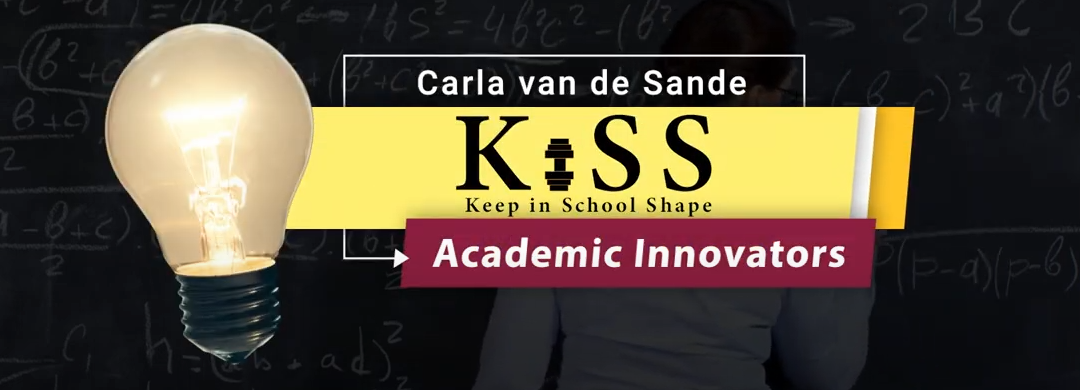 “This is my way of showing my students that I care about them, even over academic breaks.” ~ Carla van de Sande, Ph.D.
“This is my way of showing my students that I care about them, even over academic breaks.” ~ Carla van de Sande, Ph.D.
“Remember, we studied this before…?”
Carla van de Sande, associate professor of mathematics education at ASU, had gotten used to receiving blank stares from her students in response to this question at the beginning of each new semester. van de Sande noticed that whenever her students returned from extended academic breaks, there was always a refresher period. This time would be necessary for them to get back up to speed on critical concepts that they had mastered the previous semester. “As much as we’d like to think that students remember everything we’ve taught them, they don’t…especially over long breaks from school.”
“Math Builds on Itself.”
In Calculus particularly, the concepts tend to build on each other- a Calculus 2 problem often begins with the solution to a Calculus 1 problem. To help her student’s keep their skills sharp during vacation and put an end to those new-semester blank stares, van de Sande devised a clever solution: she began sending her students daily problems to solve over academic breaks. In addition to helping her students stay mentally fresh, the responses she receives to the daily problems help van de Sande understand the concepts that aren’t being clearly understood by the students in Calculus 1, so that she can emphasize them more heavily in lectures and assignments in future semesters.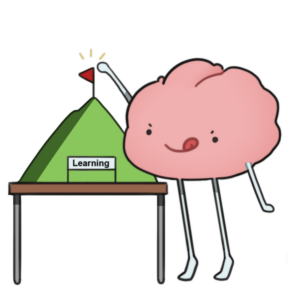
Keeping in School Shape
At the end of each semester, van de Sande offers her students the option to participate in the KiSS program over break. Hundreds of her students decide to participate each semester- van de Sande estimates that 30% of all of her students opt in to the program.
When a student signs up, they choose if they prefer to receive their daily Calculus problem via text message or email, and the time of day they’d prefer to receive it. After receiving a new problem, they have 24 hours to solve it.
Over an academic break, each day van de Sande either uploads a new problem she’s just created, or a problem from a library of hundreds of previous problems, to an online survey program. The survey program then emails or texts the daily challenge to each KiSS-enrolled student at their specified time. When the student clicks on the link they receive, they’re immediately asked for their preferred difficulty level:
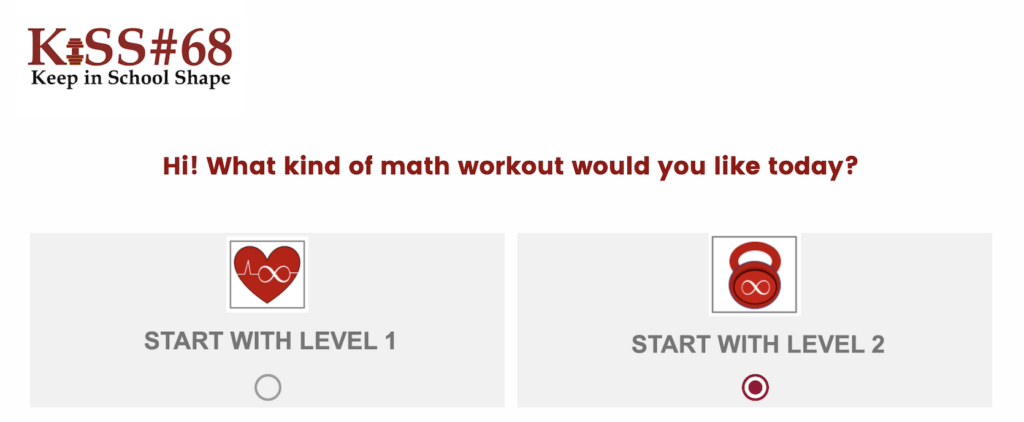
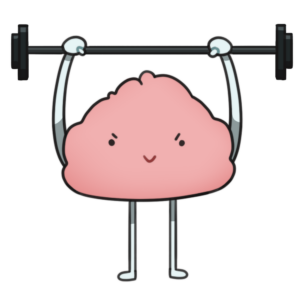 After selecting a difficulty level, the student is shown the calculus problem they’re being challenged to solve, and asked how confident they are that they can find the solution:
After selecting a difficulty level, the student is shown the calculus problem they’re being challenged to solve, and asked how confident they are that they can find the solution: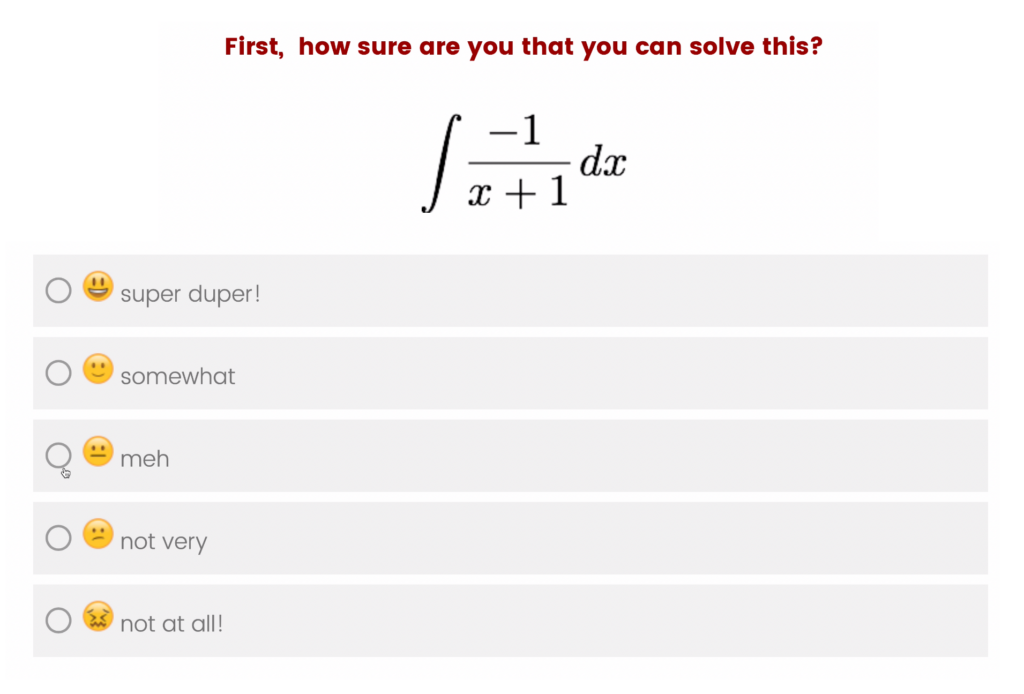
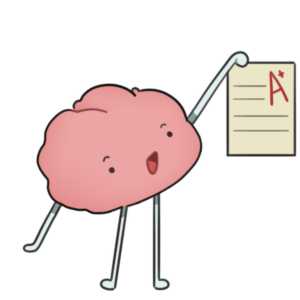
van de Sande says that seeing the problem beforehand activates the students’ pre-existing knowledge and makes them think: Do I remember how to do this? After selecting the emoji that best corresponds to their confidence level, the students are given the chance to solve the problem:
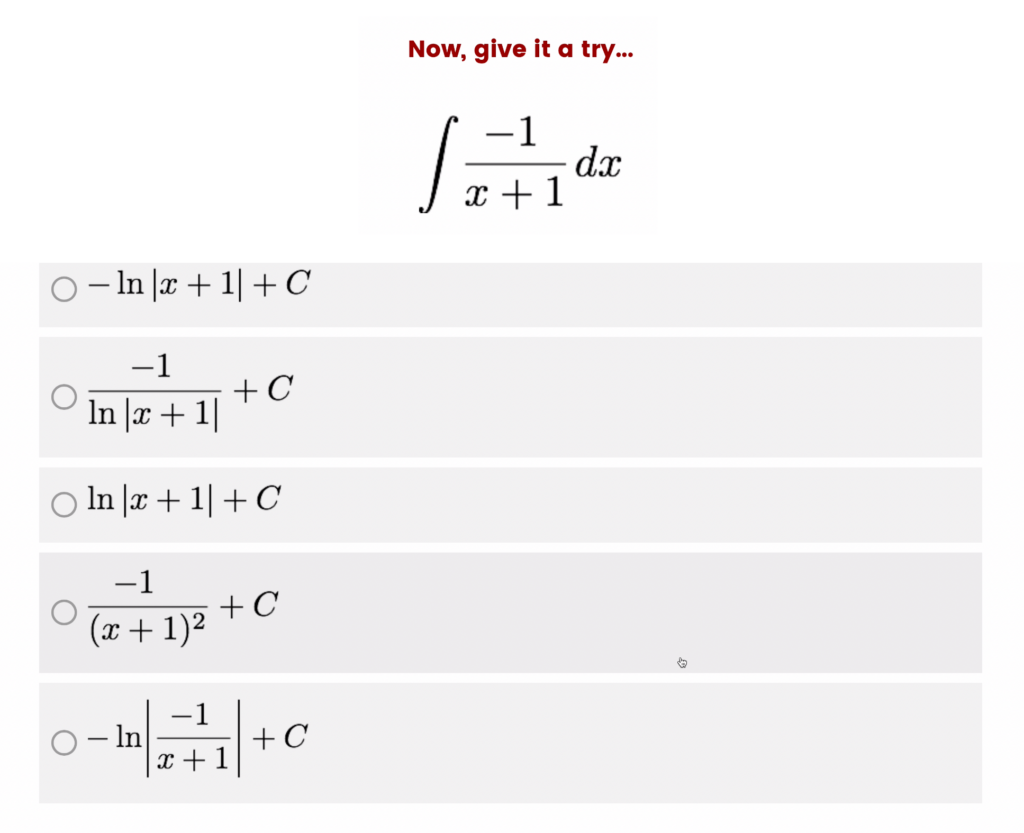
The potential solutions to each problem are always 5 multiple choice answers. Once the student chooses their solution, he or she is given immediate feedback. If the student answered correctly, they are congratulated, and asked if they want to try another problem. If they answered incorrectly, they are presented with several options, including receiving a hint, and an invitation to participate again tomorrow.

Math for Charity
While van de Sande is not able to offer students extra credit for their participation in KiSS, she has found what she believes to be an even better student motivator: solving math problems for charity. Whenever a student gets a problem correct, he or she is given a list of five worthy causes, including an ASU scholarship fund, and asked to choose their favorite. At the end of the semester, whichever cause raises the most votes receives a donation directly from van de Sande.
The future of KiSS
van de Sande is currently trying to raise sufficient funding to expand her KiSS program to other classes at ASU. Her hope is that the KiSS program can eventually be expanded to local high school courses and other grade levels, so that students of all ages can Keep in School Shape over their academic breaks.
Student Outcomes
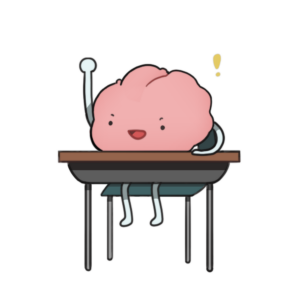 The most appropriate evaluation methodology for proving the effectiveness of KiSS as a learning tool is still being identified. However, former students have told van de Sande that the KiSS program eases the transition between courses, and makes the new course material seem less daunting and intimidating. van de Sande’s students tell her that KiSS is fun and that they look forward to receiving the problems each day because they enjoy them and like being tested. Most importantly, she says: “It leaves students more enthusiastic for the start of a semester, they feel more well-prepared, and they arrive in the classroom psyched and ready to get started.” According to past student Rishon Dev Natala: “I would recommend the KiSS program to any student. I think of it as ‘mental maintenance’… personal hygiene is brushing your teeth, wearing nice clothes. But I think mental maintenance is even more important, especially when studying is your main thing, and when you’re really serious about doing well in school.”
The most appropriate evaluation methodology for proving the effectiveness of KiSS as a learning tool is still being identified. However, former students have told van de Sande that the KiSS program eases the transition between courses, and makes the new course material seem less daunting and intimidating. van de Sande’s students tell her that KiSS is fun and that they look forward to receiving the problems each day because they enjoy them and like being tested. Most importantly, she says: “It leaves students more enthusiastic for the start of a semester, they feel more well-prepared, and they arrive in the classroom psyched and ready to get started.” According to past student Rishon Dev Natala: “I would recommend the KiSS program to any student. I think of it as ‘mental maintenance’… personal hygiene is brushing your teeth, wearing nice clothes. But I think mental maintenance is even more important, especially when studying is your main thing, and when you’re really serious about doing well in school.”
If interested in integrating similar practices into your courses, please reach out to the Learning and Teaching Hub team.
This article and video are part of a faculty spotlight series, Academic Innovators, that provides recognition and insight for the inspirational work and research being done in the FSE community. Please consider nominating a faculty member (yourself, included!) to be featured.
